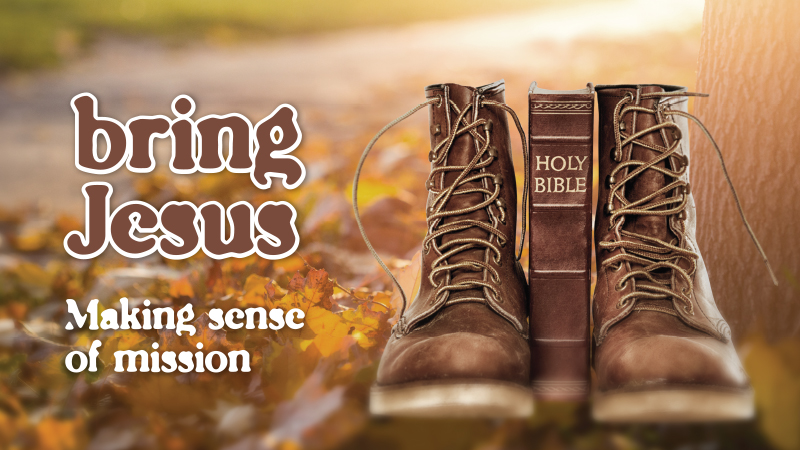Making room for more people
We had seventeen members. It was a congregation in my first parish. One lovely older guy had bought the land and built the church, largely with his own hands. He no longer held any official position in the congregation.
All decisions were made by quick meetings after the service. One day we made a small decision. Months
later, it had not been implemented. I discovered that our senior member (who had not been at the meeting) disagreed with the decision. There was no subsequent meeting to overturn the decision. It just didn’t happen. We all got on well, but nothing in my seminary training had prepared me for this way of doing church.
If a congregation is to grow from 150 to 350 people at worship, it needs to do more than find another 200 people to fill the pews. It needs to change the way it operates and its expectations of its pastor, or it will never grow.
If you have belonged to a number of different-sized congregations over the years, probably you will have noticed that they function differently. Some are small ‘family-size’ congregations, most often with fewer than 35 people at worship. They tend to be like a cat: tough, independent, aloof and self-assured. You never own a cat and you can’t herd a mob of cats. Often such congregations have a parent figure, who is in charge—as I discovered in my first parish. My role was to be the chaplain, who took care of spiritual needs. I wasn’t their leader.
We also have large ‘corporate-size’ congregations, with 250 or more people at worship each week. They are more like a city: complex and staff-driven, with a lead pastor who focuses on vision and quality worship. The board makes most decisions. Only calling a pastor, major building issues and setting the budget are done by the congregation.
In between we have the ‘pastoral-size’ congregation, where the focus is on the pastor. They usually have between 25 and 140 people at worship. The congregation sees itself as one family, though it contains a number of different groups. They tend to be like a domestic dog: loyal, personal, cohesive and focused on its ‘owner’, who is the pastor. The pastor is the centre of things, is present at most events and regularly visits the homes of members. The pastor needs to be a ‘people person’. If he isn’t, there is often trouble. This is what we train pastors for, and so our congregations tend not to grow any larger than what one pastor can care for. People join by getting to know the pastor, often through a pastor’s class (which, when you think about it, is a really strange name for a new members course).
The remaining congregations are ‘lay-ministry-size’, typically with 100 to 300 people at worship (you will notice that the numbers for each group overlap). These congregations are more like a house, where things happen in many different rooms. Lay volunteers are very active in ministry and mission. The pastor now spends more time in training and mentoring other leaders and less time in direct ministry to individuals. A house needs to be managed, and each ministry group needs a fair amount of autonomy, with leaders making significant decisions. Houses are more like cities than like cats or dogs.
So, if a congregation is to grow from 150 to 350 people at worship, it needs to do more than find another 200 people to fill the pews. It needs to change the way it operates and its expectations of its pastor, or it will never grow. This is the most difficult size transition of all. It is difficult because people still want an in-depth relationship with their pastor. Many feel the church doesn’t care for them if the pastor doesn’t visit them.
So, if we are going to add new people, we need to learn to receive ministry from each other. Members who are dependent resist this change, as do pastors who are controlling or co-dependent (who need to be needed).
For pastors this transition can feel like playing in the grand final every week. Pastors often have expectations of their role based on the pastoral-size church. Their congregation is now too large to have the intimacy of a family or pastoral church, and too small to meet all the expectations of a lay ministry church. The pastor needs to move from individual pastoral relationships to coaching and mentoring a team of pastoral carers, while still providing at least some hands-on care to those facing the most serious issues. Unless there is a high-trust culture, the pastor often slides towards burnout because of unrealistic demands on his time, often by the pastor himself.
This is not to say that all congregations need to be big. We need healthy congregations of every size. But healthy congregations see new people coming to faith in Jesus Christ, and so in most places they tend to grow. As they do, they need to change the way they do some things. Other things of course remain the same. All congregations should be Christ-centred, faith-filled, Scripture-based, Spirit-led, gospel-focused and grace-bringing.
(Lyle Schaller popularised this way of looking at congregations with his seven categories named after animals and places, but it is the slightly earlier work of Arlin J Rothauge that has prevailed. Rothauge has just four categories.)
Pastor Steen Olsen serves as the SA/NT Director for Mission and as a member of the LCA Board for Local Mission.
Read all the stories in this column | Download the book with study guides


